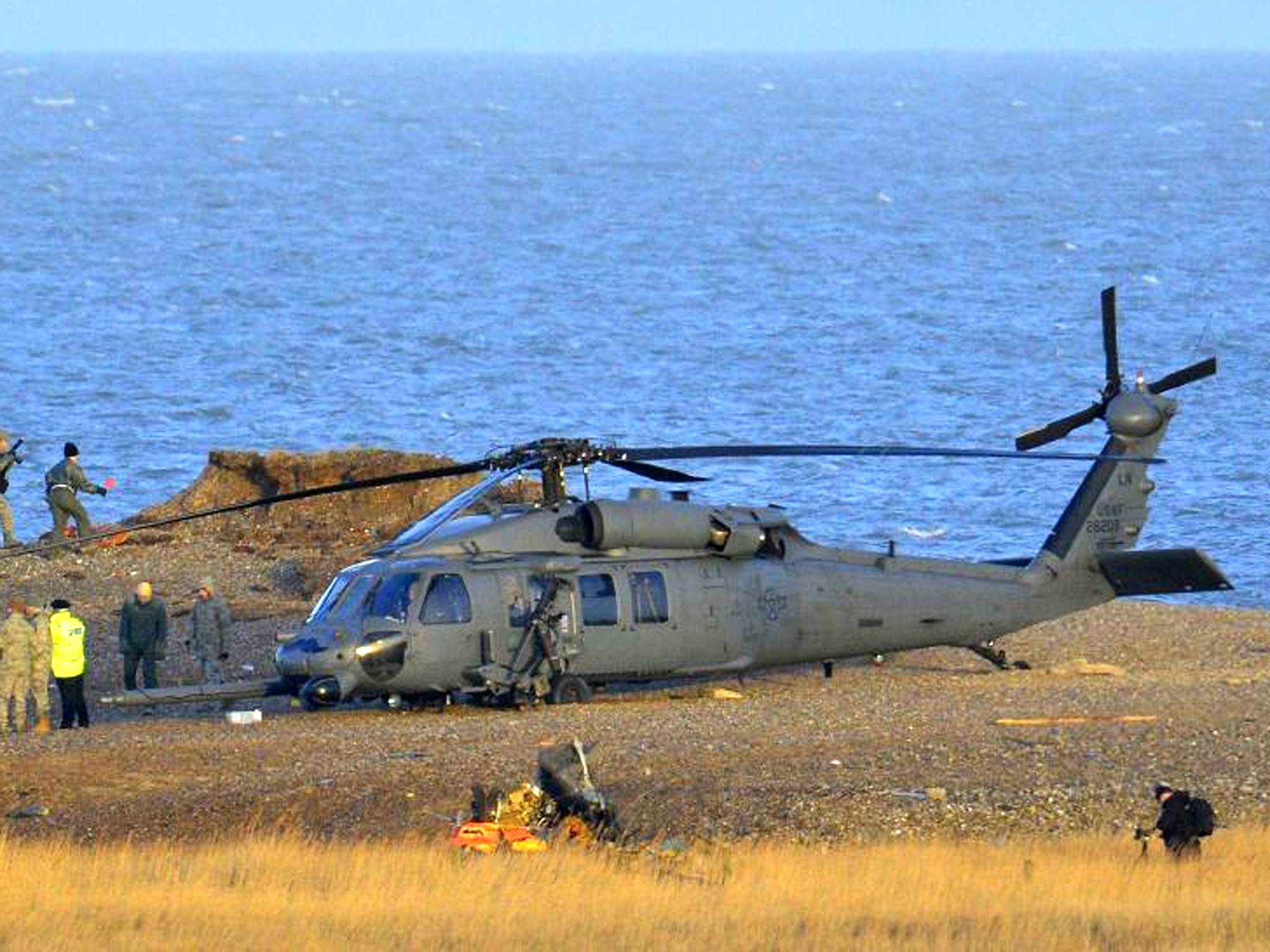Norfolk helicopter crash: US servicemen named as live ammunition hampers probe into cause of accident
Initial theory is that the aircraft may have been brought down by a bird strike as the crash site is close to breeding grounds of wildfowl

Your support helps us to tell the story
From reproductive rights to climate change to Big Tech, The Independent is on the ground when the story is developing. Whether it's investigating the financials of Elon Musk's pro-Trump PAC or producing our latest documentary, 'The A Word', which shines a light on the American women fighting for reproductive rights, we know how important it is to parse out the facts from the messaging.
At such a critical moment in US history, we need reporters on the ground. Your donation allows us to keep sending journalists to speak to both sides of the story.
The Independent is trusted by Americans across the entire political spectrum. And unlike many other quality news outlets, we choose not to lock Americans out of our reporting and analysis with paywalls. We believe quality journalism should be available to everyone, paid for by those who can afford it.
Your support makes all the difference.The investigation into the crash of an American military helicopter, killing all four crew on board, is being delayed by the presence of live ammunition and the difficulties of searching through the flooded, marshy terrain where it had gone down.
The dead servicemen were named on Wednesday as pilots Captains Christopher S. Stover and Sean M. Ruane, and acting special mission aviators Technical Sergeant Dale E. Mathews and Staff Sergeant Afton M. Ponce.
Analysts are puzzled by the sheer level of destruction, with the airframe effectively disintegrated: witnesses say they did not hear any sound of explosion or bursts of flames as the Pave Hawk plummeted from the sky.
One theory being mooted was that the aircraft may have been brought down by a bird strike. It was flying low in the evening over the Cley Marshes Nature Reserve in Norfolk close to breeding grounds of wildfowl. Local people claimed they had warned of the hazard before to the authorities but were rebuffed.
Craig Hoyles, of Flightglobal magazine, said: “They were carrying out exercises in an area where there are lots of ducks. Birds could definitely take an aircraft like this down, either by being sucked into the engine or even crashing through the canopy and knocking out the pilot.” Defence specialist Paul Beaver, an experienced pilot, added: “It's a wonderful place for wildfowl and it could have been a bird strike, night time birds do fly there.”
Richard Kelham, chairman of community council at Cley, maintained: “In a sense it was an accident waiting to happen. We used to complain to the commanding officer who bluntly told us to piss off. We do feel for the families of the crew, but they were put in a position they should not have been. This is a place for birds.”
Bernard Bishop, the warden of the Cley Marshes Nature Reserve, who was watching from his garden within sight of the crash scene, recalled: “I didn't hear any bang, I didn't see any flames, I didn't see anything that made me aware that there was a crash. But it was very quickly obvious something serious was wrong. The search and rescue crews quickly arrived and it was my job to escort them over the marsh.”
The helicopter was on a training mission fully armed. It was part of the US Air Force's 48th Fighter Wing, also referred to as the Liberty Wing, which is meant to remain combat-ready and prepared to deploy across the world at 72 hours notice.
The Pave Hawk generally has a good safety record.
Another American military helicopter, a Navy MH-53-E crashed into the Atlantic off, Norfolk Virginia today. Four out of the crew five have so far been rescued.
The investigation of the UK crash will be handed over to the Air Accidents Investigation Branch and its American counterpart. A 400 metre cordon had been set up around the debris. Detective Superintendent Bob Scully, of Norfolk Police said: “You would be very much mistaken if you thought this would be a quick process.
It all hinges on our ability to establish what happened and the removal of the casualties, who are sadly deceased. It could disrupt the evidence so this must be done methodically step-by-step.
"The crash site itself is an area of debris on difficult terrain on the marsh that's about the size of a football pitch. It's not on the beach, but there are some bits of the debris which are vulnerable to high tide.
“The crashed aircraft did contain ammunition. It is bullets, scattered over area that I have just described and so the site is hazardous, so for the present time we will be assisting and working with the military to ensure public safety by restricting access to the area. At the present time the coroner will be carrying out an assessment of the situation and is then arranging for the deceased to be removed from the site.”
Join our commenting forum
Join thought-provoking conversations, follow other Independent readers and see their replies
Comments